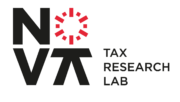The DAC initiative stands for the “Automatic Exchange of Information (AEOI) for Tax Purposes” and was developed by the OECD (Organization for Economic Cooperation and Development) in response to the global financial crisis of 2008.
It aims to improve tax transparency and prevent cross-border tax evasion by establishing a system for the automatic exchange of financial information between tax authorities of different countries.
Under the DAC initiative, financial institutions in participating countries are required to collect information about the financial accounts of foreign residents and report that information to their local tax authorities. The information collected includes details such as the account holder’s name and address, account balance, and income earned from the account. This information is then exchanged automatically with the tax authorities of other participating countries, allowing them to identify potential tax evaders and take appropriate action.
The DAC initiative has been adopted by over 100 countries, including all EU member states, as well as many non-EU countries such as the United States, Japan, and Australia. It has been implemented in phases, with the first exchanges taking place in 2017.
The DAC proposals refer to a series of EU directives designed to improve tax transparency and cooperation between EU member statesI. In summary:
- DAC 1: The first directive, issued in 2011, aimed to improve the exchange of tax information between EU member states and prevent tax evasion.
- DAC 2: This directive, issued in 2014, extended the scope of the first directive to cover a broader range of taxes, including corporate income tax, capital gains tax, and withholding tax.
- DAC 3: The third directive, issued in 2015, introduced rules for the automatic exchange of information on tax rulings between EU member states.
- DAC 4: This directive, issued in 2016, implemented the OECD’s Common Reporting Standard (CRS) in the EU, which requires financial institutions to report information on their clients’ tax residence to their local tax authorities.
- DAC 5: The fifth directive, issued in 2018, introduced rules for the automatic exchange of information on beneficial ownership of companies and trusts between EU member states.
- DAC 6: The sixth directive, issued in 2018, requires intermediaries to report certain cross-border tax arrangements to their local tax authorities, with the aim of preventing tax avoidance and increasing transparency.[1]
- DAC 7: The seventh directive, issued in 2020, is meant to ensure that Member States automatically exchange information on the revenues generated by sellers on digital platforms, whether the platform is located in the EU or not.
This said, in the past couple of years, the EU legislator has been focusing on the taxation of crypto assets – which are a relatively recent reality and consist of an ever-changing market.
The specificities of crypto assets make it difficult for tax administrations to trace and identify taxable events. Inclusively, in Portugal, the Tax authorities have struggle with the qualification of sale of assets vs. currency exchange operations. The problem is intensified when trading is carried out using crypto-assets service providers or crypto-assets operators located in another jurisdiction.
This discussion inevitably sparked the proposal for a regulation on Markets in Crypto-assets (referred to as MiCA), which amends Directive (EU) 2019/1937, and was proposed on 24 September 2020 by the European Commission.
The regulation intends to establish the framework for crypto-assets at EU level, thereby providing legal certainty for crypto-assets not covered by existing EU legislation. It is meant to enhance the protection of consumers and investors as well as financial stability.
The regulation identifies and covers three types of crypto-assets, namely asset-referenced tokens, electronic money tokens, and other crypto-assets not covered by existing EU law. The legislation would regulate issuance and trading of crypto-assets as well as the management of the underlying assets, where applicable.
However, MiCA does not provide a basis for tax authorities to collect and exchange the information that they need in order to tax crypto-asset income.
This is where DAC 8 comes into play.
The DAC8 proposal is to contain provisions on reporting and exchange of information on crypto-assets for direct tax purposes. The proposal also aims at improving existing provisions to close loopholes and ensure the correct functioning of the rules.
In practice, the proposal will improve the ability of Member States to detect and counter tax fraud, tax evasion and tax avoidance by:[2]
- requiring all reporting crypto-asset service providers, irrespective of their size or location, to report transactions of clients residing in the EU. The proposal covers both domestic and cross-border transactions. In some cases, reporting obligations will also cover non-fungible tokens (NFTs).
- requiring financial institutions to report on e-money and central bank digital currencies.
- extending the scope of the automatic exchange of advance cross-border rulings for high net-worth individuals.
- establishing a common minimum level of penalties for the most serious non-compliant behavior, such as complete absence of reporting despite administrative reminders.
It is foreseen that the new reporting requirements regarding crypto assets, e-money, and digital currencies would be transposed by 31 December 2025 with a view to entering into force on 1 January 2026. We commend this EU initiative – which in essence intends to provide security and stability to the crypto market. However, a lot can happen in the next three years, especially in the crypto asset environment – we hope that both the EU and internal legislators can keep up.
March 2023
Maria Lima Ferreira
[1] It is to be noted that DAC 6 has been recently been under fire – The Court of Justice of the European Union has issued its Judgment of December 8, 2022 (case C-694/20), in which the obligation to communicate to other intermediaries imposed by article 8ab(5) of Directive “DAC 6” to lawyers exempted from the disclosure of cross-border tax planning arrangements due to the legal professional secrecy has been declared contrary to EU Law.
[2] Source – Questions and Answers: DAC8, available at https://ec.europa.eu/commission/presscorner/detail/en/qanda_22_7517
